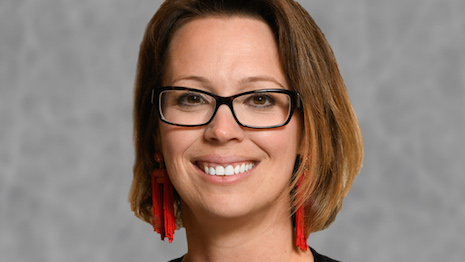- About
- Subscribe Now
- New York,
July 19, 2018

 Kristie McGowan is director of the global luxury and management program at North Carolina State University’s Poole College of Management
Kristie McGowan is director of the global luxury and management program at North Carolina State University’s Poole College of Management
By Kristie McGowan and Cara Fratto
For years marketing has been defined as the way to create, communicate, deliver and exchange offerings that have value for customers, clients and the larger society.
While this definition holds true today, we are seeing an exciting evolution in how brands market to luxury consumers as their expectations continue to change.
Sizing up the market
Before we delve into this evolution, let us consider some powerful statistics that illustrate both the changing landscape of the luxury market and shifts in consumer behavior.
According to "The State of Fashion 2018: The Business of Fashion,” a report by McKinsey & Company, the luxury market comprises 99 million millennials and 77 million baby boomers.
The millennial hype is certainly valid due to the sheer size of the market. However, luxury brands must not forget that boomer customers currently have much greater spending impact than the millennial generation.
 Cara Fratto is an independent marketing consultant specializing in luxury brand marketing, lecturer in the global luxury and management (GLAM) program at North Carolina State University and GLAM Industry Advisory Board member
Cara Fratto is an independent marketing consultant specializing in luxury brand marketing, lecturer in the global luxury and management (GLAM) program at North Carolina State University and GLAM Industry Advisory Board member
On average, 63 percent of luxury products are still bought in physical stores. There is still a desire for luxury consumers to touch, smell, see and experience luxury, making retailers rethink how they attract customers to bricks-and-mortar stores in the current digital age.
The McKinsey study also found 45 percent of luxury consumers want personalized products and services, and more than 70 percent of United States consumers expect some sort of personalization from online businesses.
Personalization has permeated the luxury space over the past decade and will continue to be a driving force in how brands interact with customers.
Lastly, 42 out of 100 fashion brands now disclose supplier information.
Consumers now want to know how their goods are being produced as well as a brand’s social, environmental and political impact.
Let us take a look at some great examples of marketing to this new consumer through the lens of the four “E’s,” a new set of letters coined by Ogilvy Worldwide that now take center-stage in luxury marketing: experience, everyplace, evangelism and exchange.
Experience
Over the past decade, there has been a huge shift toward experiential marketing and in-store experiences.
Last fall, Louis Vuitton created a New York pop-up store showcasing vintage trunks from 1854 to present. This highly successful event created an experience for its clients and strengthened their connection with the brand.
In celebration of the 80th anniversary of its iconic silk scarves, Hermès hosted worldwide pop-up laundromats in 2016 for customers to bring their Hermès scarves to be dyed in one of four color options. Not only was this experience highly Instagram-worthy, it connected people with the brand, created excitement, and garnered publicity and buzz for Hermès.
So how can luxury marketers translate customer experience to ecommerce?
Online fashion retailer Net-A-Porter recently began selling higher-end jewelry from Cartier and Gucci. These items historically were purchased in-store due to the intricate nature of the product and higher price points.
Net-A-Porter offers its online customers a 24/7 concierge, allowing them to call at any time with questions. In addition, in select cities, clients can test a product for 24 hours and then return it if they do not like it.
In this way, Net-A-Porter is creating online experiences, while linking customers to the physical world.
Everywhere
Because we have so much access at our fingertips, brands need to be everywhere their customers are, whether online, in-store, or even at a customer’s home or office.
Burberry sets the bar in providing digital technology across multiple platforms to engage its customers, including the ability to buy items as soon as they hit the runway.
Nearly 10 years ago, Burberry introduced Art of Trench, asking customers to share photos of themselves wearing their Burberry trench coat. The campaign now extends across multiple social channels.
J.Hilburn is a prime example of everyplace, offering a network of 2,000 stylists in all 50 states who visit customers in their homes or offices to fit and help them select clothing.
Evangelism
According to "The State of Fashion 2018: The Business of Fashion,” nine out of 10 consumers trust an influencer more than traditional advertisements or celebrity endorsements.
Savvy marketers are now creating brand evangelists, better known as influencers, and customers who expand the company's marketing.
To do this, a company must believe in and stand for something and also know who their customers are.
Patagonia is a great example of a brand harnessing the power of brand evangelism. The company was founded by people who love to explore and travel and to whom the environment is of extreme importance.
The company's recent "Don't buy this jacket" ad encourages consumers to wear the Patagonia jacket they already have so they do not add more waste to the environment.
By being authentic in this way, Patagonia engages consumers and has created a community of evangelists.
Clothing company Everlane has developed cult-following status due to its highly engaged customer base. The company, which offers ethically manufactured luxury basics such as cashmere sweaters and jeans at transparent prices, runs advertising campaigns featuring women of all shapes and sizes.
Everlane’s inclusive and socially responsible strategy resonates strongly with its customer base, so much so that it once amassed a waitlist of 44,000 people for a pair of jeans.
Exchange
Today, customers have high expectations throughout every stage of their interaction with a brand.
Luxury companies need to think beyond the point of sale and put energy and attention into customer service, personalization, and providing product knowledge to customers.
Mr Porter, an online fashion retailer specifically targeted to millennial men, offers creative content that is both cool and curated, including videos highlighting anything from how to pack for a weekend trip to a peek inside an international influencer’s luxury watch collection. The Net-A-Porter unit’s same-day delivery in New York ensures customers are receiving great value and service.
Insider access is another key part of the concept of exchange.
As a result, loyalty programs are changing shape. It is no longer about giving customers a gift card after reaching a spending threshold.
Instead, it involves bringing VIP clients to fashion shows, taking them to dinner, introducing them to celebrities – giving them access to experiences and an exchange they can only get with that brand.
Technology is being used to create individual experiences in ecommerce brands.
For example, Orchard Mile features a variety of established and emerging luxury brands.
With the company's "My Mile" feature, users can choose the brands they like and customize the Web site, so that each time they visit they are shown those exact brands as well as similar brands.
By cutting through to what the customer actually wants to see, Orchard Mile creates a truly personalized customer experience.
While the fundamentals of marketing have not changed, consumer expectations have.
To be successful, luxury brands need to refine and expand the way they attract, retain and market to luxury customers.
Top tips for marketing to the evolving luxury consumer
Kristie McGowan is Raleigh, NC-based director of the global luxury and management program at North Carolina State University’s Poole College of Management in partnership with SKEMA Business School in Paris. Reach her at kldiluna@ncsu.edu.
Cara Fratto is a Raleigh, NC-based independent marketing consultant specializing in luxury brand marketing, lecturer in the global luxury and management (GLAM) program at North Carolina State University and GLAM Industry Advisory Board member. Reach her at carafratto@gmail.com.
Share your thoughts. Click here